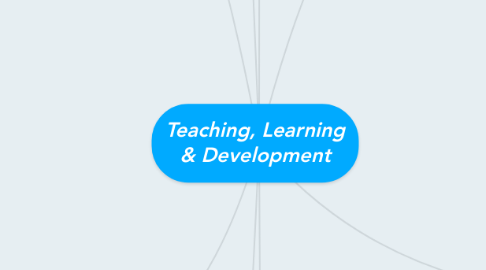
1. Chapter 6: Individual Differences -Intellectual Abilities and Challenges
1.1. Students with Exceptionalities
1.2. Cognitive Styles
1.3. Learning Styles
1.4. Intelligence
1.4.1. Structure or Process
1.4.1.1. Gardner's Theory of Multiple Intelligences (MI)
1.4.1.1.1. Linguistic
1.4.1.1.2. Logical-Mathematical
1.4.1.1.3. Spatial
1.4.1.1.4. Bodily-Kinesthetic
1.4.1.1.5. Musical
1.4.1.1.6. Interpersonal
1.4.1.1.7. Intrapersonal
1.4.1.1.8. Naturalistic
1.4.1.2. Sternberg's Triarchic Theory
1.4.1.2.1. Analytical/Componential Intelligence
1.4.1.2.2. Creative/Experiential
1.4.1.2.3. Practical/Contextual
1.4.2. General Intelligence (g)
1.4.2.1. Fluid Intelligence
1.4.2.2. Crystallized Intelligence
1.4.2.3. General Memory and Learning
1.4.2.4. Broad Visual Perception
1.4.2.5. Broad Auditory Perception
1.4.2.6. Broad Retrieval Capacity
1.4.2.7. Broad Cognitive Speediness
1.4.2.8. Processing Speed (decision speed)
1.5. Special Education
1.5.1. High-Incidence Exceptionalities
1.5.1.1. Learning Disabilities
1.5.1.2. Behavioural Disorders
1.5.1.3. Giftedness
1.5.1.4. Intellectual Disabilities
1.5.2. Differentiated Learning
1.5.3. Low-Incidence Exceptionalities
1.5.3.1. Autism
1.5.3.2. Hearing and Visual Impairments
1.5.3.3. Serious Health Impairment
1.5.4. Inclusion
1.5.5. Individualized-Education Program
1.5.5.1. Psycho-Educational Assessment
2. Chapter 8: Standardized Achievement Tests
2.1. Five Essential Steps of Building Better Standardized Tests
2.1.1. 1. Test must assess important curricular goals
2.1.2. 2. The curricular goals must be teachable
2.1.3. 3. the assessed knowledge and skills must be clearly described and accurately reflect effective learning
2.1.4. 4. the test must be specific enough to directly guide instruction
2.1.5. 5. The assessment process must be minimally intrusive on classrooms
2.2. Standardized Tests
2.2.1. Aptitude Test
2.2.1.1. Norm-Referenced Tests
2.2.2. Achievement Test
2.2.2.1. Criterion-Referenced Test
2.2.3. Stakeholder Views of Standardized tests
3. Chapter 5: Assessing Student Progress
3.1. Types of Assessment
3.1.1. Formative Assessment
3.1.2. Diagnostic Assessment
3.1.3. Summative Assessment
3.2. Authentic Assessment
3.2.1. Portfolio
3.2.2. Criterion-Based Assessment
3.3. Types of Test Questions
3.3.1. Selected-Response Questions
3.3.1.1. True or False
3.3.1.2. Multiple Choice
3.3.1.3. Matching
3.3.2. Content Validity
3.3.3. Constructed-Response Question
3.3.3.1. Short Answer Questions
3.3.3.2. Restricted Essay and Essay Questions
3.3.3.2.1. Rubric
4. Chapter 7: Socio-Cultural Considerations
4.1. Socio-Cultural Considerations
4.1.1. Stereotype Threat
4.1.1.1. Prejudice
4.1.2. Socio-Economic Status
4.2. Parenting Styles
4.2.1. Authoritative Parenting
4.2.2. Authoritarian Parenting
4.2.3. Permissive Parenting
4.3. Critical Consciousness
4.4. Banks' Dimensions of Multicultural Education
4.4.1. 1. Helping students understand how beliefs influence knowledge
4.4.2. 2. Reducing prejudice
4.4.3. 3. Teaching to benefit all students
4.4.4. 4. Creating social structures that support the development and learning of all students
5. Chapter 4: Making Instructional Decisions
5.1. Stiggin's Achievement Tests
5.1.1. Achievement Targets
5.1.1.1. 1. Knowledge
5.1.1.2. 2. Reasoning Skills
5.1.1.3. 3. Products, Attitudes, and Dispositions
5.2. Learning Objectives and Lesson Plans
5.2.1. Backward Design
5.2.1.1. Step 1: What Do I Want My Students to Learn?
5.2.1.2. Step 2: How Will I Determine Whether or Not They Have Learned?
5.2.1.3. Step 3: What Will I Teach?
5.2.1.4. Step 4: How Will I Teach?
5.2.2. Bloom's Taxonomy
5.2.2.1. 1. Knowledge
5.2.2.2. 2. Comprehension
5.2.2.3. 3. Application
5.2.2.4. 4. Analysis
5.2.2.5. 5. Synthesis
5.2.2.6. 6. Evaluation
5.3. Select - Organize - Integrate Model of Meaningful Learning
5.3.1. Sensory Memory
5.3.2. Working Memory
5.3.3. Long-Term Memory
5.4. Instructional Practices
5.4.1. Universal Instructional Design (UID)
5.4.2. Cognitive Strategies
5.4.2.1. Metacognition
5.4.3. Motivational Underpinnings
5.4.3.1. Extrinsic Motivation
5.4.3.2. Intrinsic Motivation
5.4.4. How People Learn (HPL) Framework - four main components
5.4.4.1. 1. Knowledge-Centredness
5.4.4.2. 2. Learner-Centredness
5.4.4.3. 3. Community-Centredness
5.4.4.4. 4. Assessment Centredness
5.4.5. Direct Instruction (DI) - components:
5.4.5.1. emphasis on well-developed and carefully planned lessons
5.4.5.2. requires teaching via some form of explanation and guiding students through complex concepts/problems
5.4.5.3. requires that students complete problems or exercises related to the material
6. Chapter 3: Establishing a Positive Learning Environment
6.1. Resiliency
6.2. Dynamic Classroom Management (DCM)
6.2.1. Positive Behaviour Support
6.2.2. Classroom Discourse Research
6.3. Classroom Management
6.3.1. Process-Outcome Research
6.4. ADHD
6.5. Albert Bandura
6.5.1. Reciprocal Determinism
7. Chapter 2: Considering Developmental Differences
7.1. Jean Piaget
7.1.1. Schema
7.1.1.1. Equilibrium
7.1.1.2. Disequilibrium
7.1.1.2.1. Adaptation
7.1.2. Four Stage's of Cognitive Development
7.1.2.1. Sensorimotor (0-2 Years Old)
7.1.2.2. Preoperational (2-6)
7.1.2.3. Concrete Operations (7-11)
7.1.2.4. Formal Operations (12+)
7.2. Lev Vygotsky
7.2.1. Scaffolding
7.2.2. Zone of Proximal Development
7.3. Noam Chomsky
7.3.1. Language Acquisition Device
7.4. Information Processing
7.4.1. Executive Cognitive Functioning
7.4.2. Short Term Memory
7.4.3. Working Memory
7.5. Ecological Theory, Urie Brofenbrenner
7.5.1. Mircrosystem
7.5.2. Mesosystem
7.5.3. Exosystem
7.5.4. Macrosystem
7.5.5. Chronosystem
7.6. Personal and Social Development
7.6.1. Temperament
7.6.2. Self-Efficacy
7.6.3. Self-Esteem
7.6.4. Self-Concept
7.6.5. Theory of Mind
7.6.6. Growth Mindset vs. Fixed Mindset
8. Chapter 1: Planning for the Upcoming School Year
8.1. Behaviorism
8.2. Educational Psychology
8.2.1. Schwab's Four Commonplaces
8.2.1.1. Someone (the teacher)
8.2.1.2. Teaches something (the curriculum)
8.2.1.3. Someone else (the student)
8.2.1.4. Some setting (the classroom)
8.2.2. Reflective Practice
8.3. Research
8.3.1. Validity
8.3.2. Reliability
8.3.3. Research Process
8.3.3.1. Step 1: Observation of Phenomena
8.3.3.2. Step 2: Formation of Questions
8.3.3.3. Step 3: Application of Research Methods
8.3.3.4. Step 4: Development of Guiding Principles
8.3.3.5. Step 5: Development of Theories
8.3.4. Quantitative Research
8.3.5. Qualitative Research
8.3.5.1. Ethnographic Research
8.3.5.2. Idiographic Research
8.4. Curriculum Planning
8.4.1. Constructivism
8.4.2. Educational Purpose
8.4.3. Learning Expectations
8.4.4. Evaluation
